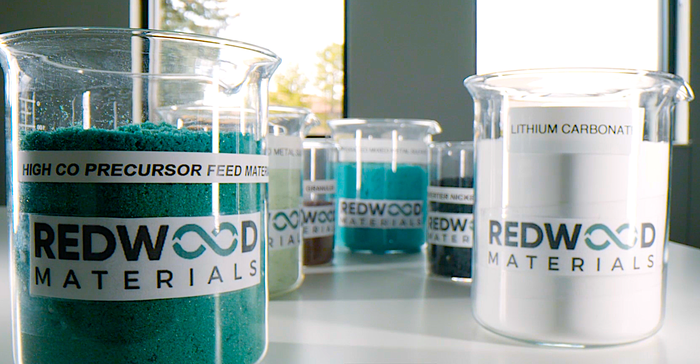Ford Invests $50 Million in Visionary Li-Ion Battery Recycler Redwood
Ford wants in on the circular battery supply chain that Redwood Materials is developing.

Recognizing that the coming wave of scrapped batteries can be a gold mine for the raw materials needed to make new batteries, Ford inked a deal investing $50 in battery recycler Redwood Materials.
Well, if not a gold mine, at least a nickel, cobalt, lithium, and copper mine. Redwood says its recycle technology recovers more than 95 percent of these materials from discarded batteries. That’s not just electric car batteries, but batteries from cell phones, laptops, and other consumer electronic devices that use lithium-ion batteries. As the generation of new and planned EVs reaches customers, the wave of batteries that need to be disposed of will grow to a tsunami.
The plan is to funnel these materials back into Ford’s battery production process by making new anode copper foil and cathode active materials for new batteries. Ford says that this will slash costs, increase the supply of these materials, and will reduce the company’s vulnerability to supply disruptions from the importation of these mined raw materials.
While the electric vehicle market is currently the Wild West, with ambitious startups making and losing fortunes, Redwood enjoys credibility because it was founded by Tesla co-founder JB Straubel, as Design News outlined in a March 2021 article.
“Increasing our nation’s production of batteries and their materials through domestic recycling can serve as a key enabler to improve the environmental footprint of U.S. manufacturing of lithium-ion batteries, decrease cost and, in turn, drive up domestic adoption of electric vehicles,” said Straubel.
“Redwood and Ford share an understanding that to truly make electric vehicles sustainable and affordable, we need to localize the existing complex and expensive supply chain network, create pathways for end-of-life vehicles, ramp lithium-ion recycling, and increase battery production, all here in America,” he added.
As new Fords like the Mach-E and F-150 reach the end of their lives, Ford and Redwood will collect and disassemble end-of-life batteries from these electric vehicles for recycling and remanufacturing to help reduce the cost associated with battery repairs and raw materials to manufacture all-new batteries.
“We are designing our battery supply chain to create a fully closed-loop lifecycle to drive down the cost of electric vehicles via a reliable U.S. materials supply chain,” said Lisa Drake, Ford’s North America chief operating officer. “This approach will help ensure valuable materials in end-of-life products re-enter the supply chain and do not wind up in landfills, reducing our reliance on the existing commodities supply chain that will be quickly overwhelmed by industry demand.”
“Our work with Redwood will, by design, help ensure the infrastructure is in place to cost-effectively recycle end-of-life Ford batteries to create a robust domestic materials stream and drive down the cost of electric vehicles,” Drake continued.

Redwood is an attractive partner for Ford because the company has existing partnerships with battery manufacturers to recycle production scrap and deals with automakers to process the batteries from end-of-life EVs. Soon this will include supplying anode and cathode materials back to the US supply chain.
Today, Redwood processes enough battery material for 2 gigawatt-hours of batteries per year. That is about enough to build 30,000 cars. Ford’s investment will assist in the company’s plan to grow that capacity 50-fold, to 100 GWh of cathode material, which should be enough for a million new vehicles by 2025.
About the Author(s)
You May Also Like





